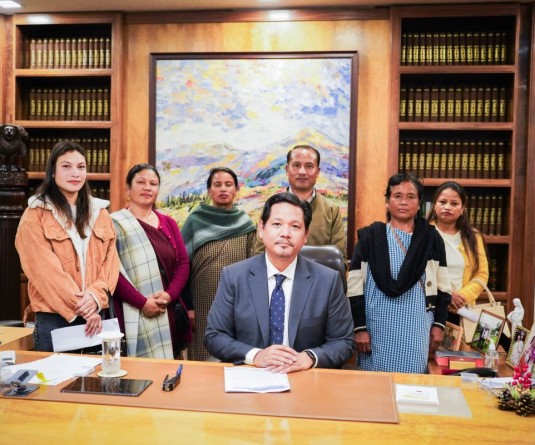
MALIGAON, MAY 14 (MExN): In a major step towards enhancing railway safety and infrastructure resilience, the Northeast Frontier Railway (NFR) has deployed advanced technology to tackle challenges related to landslides, drainage, and embankment stability along the Lumding–Badarpur Hill Section in Assam.
The section, which runs through the hilly terrain of Dima Hasao and Cachar districts under the Lumding division, is a critical link connecting Tripura, Mizoram, Manipur and the Barak Valley of Assam with the rest of the country. The region’s difficult topography and intense monsoon conditions make it highly vulnerable to natural hazards, often disrupting rail operations and posing safety risks.
To address these challenges, the NFR has launched a comprehensive aerial and geophysical survey over an 80-kilometre stretch of the section, between KM 45 and KM 125. The survey employs drone-based LiDAR (Light Detection and Ranging), high-resolution aerial imaging, and electromagnetic techniques to assess terrain stability.
The aerial survey captured 2 cm resolution LiDAR orthophotos, thermal imagery and Digital Elevation Models (DEMs), providing insights into terrain morphology, slope behaviour and surface deformation. Ground-based technologies such as Ground Penetrating Radar (GPR), Transient Electromagnetic Survey, Electrical Resistivity Tomography (ERT), and Seismic Refraction Testing (SRT) were also deployed to detect underground faults, soil saturation zones and subsurface water accumulations.
To ensure structural integrity of tunnels, particularly during monsoon, Terrestrial Laser Scanning (TLS) was conducted at key locations, including a 750-metre-long tunnel at Location 20. The 360-degree laser scanning technique offers sub-centimetre precision in detecting deformations, joint dislocations and water ingress, aiding preventive maintenance.
Drone-mounted GPR is also being utilised at bridge and tunnel approaches to identify shallow subsurface anomalies such as voids, trenches and soil discontinuities, which can cause ground settlement or movement.
Additionally, NFR is leveraging GIS and remote sensing technologies to generate dynamic landslide susceptibility maps. These maps classify risk levels based on factors such as slope gradient, soil type, vegetation and hydrology.
This holistic, technology-driven approach underlines NFR’s commitment to ensuring the safety of its infrastructure, passengers and staff. Through the integration of aerial intelligence, geophysical tools and digital modelling, NFR aims to improve real-time monitoring and risk mitigation, paving the way for a safer and more resilient railway network in Northeast India.






